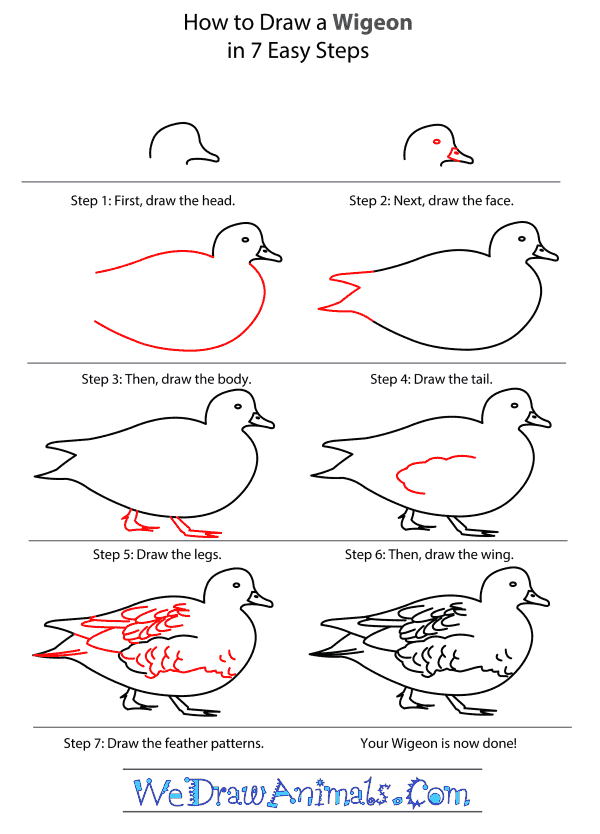In this quick tutorial you'll learn how to draw a Wigeon in 7 easy steps - great for kids and novice artists.
The images above represent how your finished drawing is going to look and the steps involved.
Below are the individual steps - you can click on each one for a High Resolution printable PDF version.
At the bottom you can read some interesting facts about the Wigeon.
Make sure you also check out any of the hundreds of drawing tutorials grouped by category.
How to Draw a Wigeon - Step-by-Step Tutorial
Step 1: Let's draw the wigeon's head first. Make it rounded on top. Add a short beak.
Step 2: Give your bird an eye and a line for the beak. Add a dot for the nostril.
Step 3: Now draw the body. The front of the bird will have a line with a much bigger curve. Leave the back open for the tail.
Step 4: Add the tail in the shape of an M on its side.
Step 5: Add legs to your duck. They are short and have wide, webbed feet.
Step 6: Make a wavy line for the wing.
Step 7: Lastly, add the feather pattern. Your wigeon is done. If you'd like to color it, its body is pinkish-brown but it's forehead and beak are white.
Interesting Facts about the Wigeon
The wigeon (Anas penelope) is a medium-sized duck that is found across Asia and Europe. They usually nests near wetlands and marshes and lay their eggs on the ground near water. Outside of breeding season they can usually be found around large bodies of water such as lakes or reservoirs.
Did you know?
- Although this specific wigeon is also called the Eurasian wigeon, it has also occasionally been sighted all over North America.
- The North American counterpart is called the American wigeon (Anas americana).
- Breeding males are quite colorful, with green and black feathers, a pink breast and a dark red head with a white crown. Females and non-breeding males had primarily brown coloring.
- The Euroasian wigeon will sometimes join the flocks with the American wigeon and will also cross breed with them.
- During breeding season, the male wigeons erect a small crest on the top of their head to attract females.
Lesson plan note: Review the changes that occur in the male wigeon during breeding season. Discuss how many animals experience physical changes during breeding seasons, and how those changes would help during breeding season to make the males more attractive to the females.








